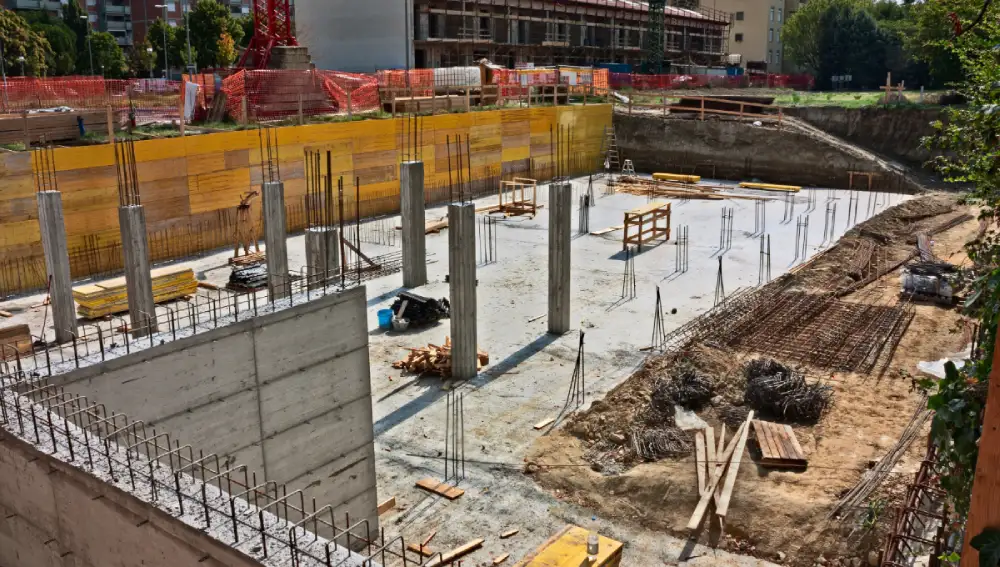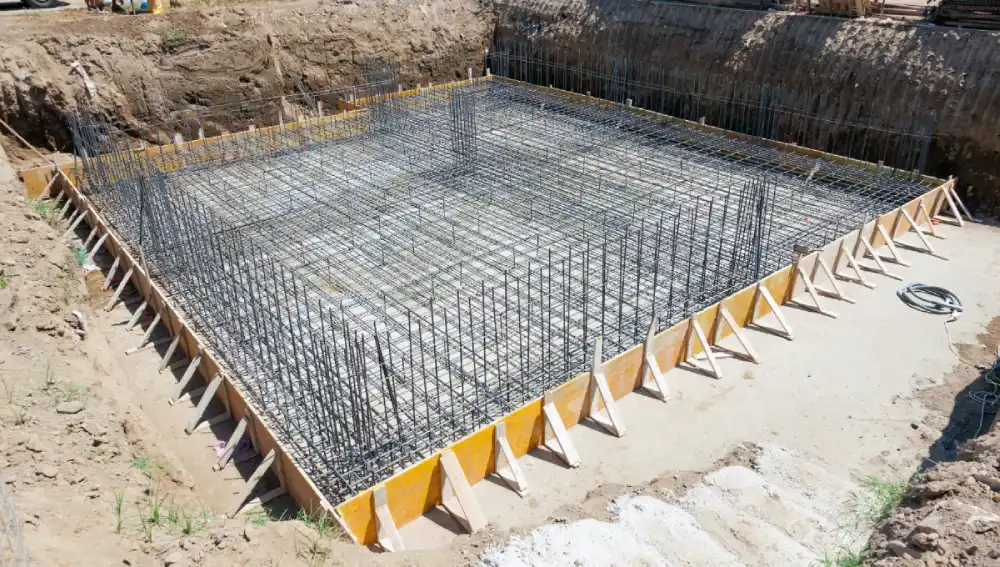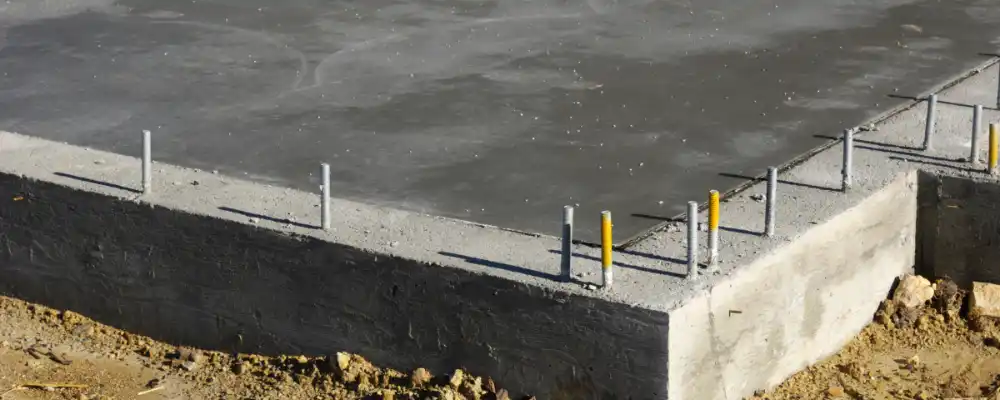Raft or mat foundations are very important in the construction of large buildings. It is used especially when the ground wherein construction is to be done is very weak or where the construction work requires the structure to spread out its mass. In this article, we provide you an overview of raft foundation, its working, the pros and cons of using it, and some construction tips.
What is a Raft Foundation?

A raft foundation, also known as a mat foundation, is a thick expansive concrete slab that covers the entire area of the foundation. While the conventional techniques of construction employ individual footings for columns, a raft foundation distributes the load over a large slab that extends below the whole structure and provides uniform load transfer to the soil.
How Does a Raft Foundation Work?
A raft foundation influences load distribution by spreading it over a larger area, which reduces pressure on the soil. Think about placing a heavy book on the sand. If you stand it on its edge, it sinks. However, if you lay it flat, it stays on top. A raft foundation applies the same principle to distribute the weight of a building across a wide surface, which prevents sinking and maintains stability.
Types of Raft Foundations
Different types of raft foundations exist, each designed to suit specific situations:
- Solid Slab Raft: One uniform concrete slab makes up this basic type.
- Slab and Beam Raft: This type includes beams in the slab to boost its strength and rigidity.
- Cellular Raft: A cellular raft consists of linked cells or boxes, which helps to spread loads more efficiently.
- Piled Raft: This type adds piles under the raft for additional support in very soft soil.
Advantages of Raft Foundations

Raft foundations offer numerous perks, making them a go-to choice in construction:
- Even Load Distribution: These foundations spread the weight uniformly, lowering the chance of uneven settling.
- Cost-Effective: One big slab can cost less than several separate footings for large structures.
- Time-Saving: Constructing a raft foundation often takes less time because it’s a single large slab instead of many smaller footings.
- Good for Weak Soils: They work well in areas with poor soil conditions as they spread the load across a wide area.
- Less Excavation: These foundations need less digging compared to deep foundations, which helps in busy areas and reduces excavation time.
Disadvantages of Raft Foundations
Raft foundations have some downsides too:
- Not for All Soils: They don’t work well on some extremely soft soils where you might need deep foundations.
- High Material Costs: They need a lot of concrete and steel, which can make them expensive.
- Complex Design: Creating a raft foundation can be tricky and needs careful planning.
- Risk of Cracking: Bad construction can cause cracking, which can make the foundation weak.
Construction Process
To build a raft foundation in construction, you need to follow several key steps:
- Site Preparation: Clean the site. Remove trash, plants, and the top layer of soil. Level and pack the ground.
- Excavation: Dig to the right depth. Make sure the hole is flat.
- Formwork: Build forms around the edges to keep the concrete in place.
- Reinforcement: Lay steel bars (rebar) in a grid. Space them out well and support them.
- Concrete Pouring: Pour concrete. Fill all gaps and cover the rebar.
- Curing: Allow the concrete to harden and get stronger. This takes a few days.
- Inspection: Check the foundation to ensure it meets all specifications and standards.
Practical Tips
Here are some hands-on suggestions to build a raft foundation:
- Proper Planning: Map out the layout with care to spread the load evenly. Consult structural or civil engineers to ensure appropriate design.
- Quality Materials: Pick top-notch concrete and reinforcement materials to ensure strength and longevity.
- Professional Supervision: Get seasoned engineers and supervisors to watch over the building process.
- Regular Maintenance: Check and inspect the foundation often to catch and fix problems.
- Soil Testing: Run in-depth soil tests to grasp its traits and load-bearing ability.
Conclusion
Raft or mat foundations work well for many building projects on weak soil. They spread the weight over a big area, which makes the strcuture stable and cuts down on the chance of uneven sinking. They do have some issues, but good planning and use of high-quality materials , along with expert supervision can help make sure the building is sufficiently stable. Knowing about the advantages and how to build raft foundations can help you make smart choices for your next building job.
FAQs
Builders pick raft foundations when the ground can’t hold much weight or when they need to spread out the building’s load over a big area to stop uneven sinking. You’ll often see these foundations under big buildings, factories, and structures on soft or swelling soils.
The weight it needs to hold up and the type of soil decide how thick a raft foundation should be. These foundations are generally between 300mm and 1,200mm thick. But you’ll need an engineer to figure out the exact thickness with some careful math.
Yes, builders can use a raft foundation for a house when the ground isn’t right for normal strip or trench foundations. It gives a solid base and stops uneven sinking when the soil is weak or might shift in cases where the soil is prone to movement.
Some of the common raft foundation issues are cracking due to poor construictions, uneven settling in case the soil beneath is not compacted, and water seepage in a case where the waterproofing is not done right. Such issues can be noted through regular inspection and maintenance and consequently solved before they get out of hand.
The time it takes to build a raft foundation may depend on a few major parameters: the project size, soil conditions, and the weather. Usually, it may run into a few weeks; sometimes, it can also run up to two months.
The time it takes to build a raft foundation may depend on a few major parameters: the project size, soil conditions, and the weather. Usually, it may run into a few weeks; sometimes, it can also run up to two months.

